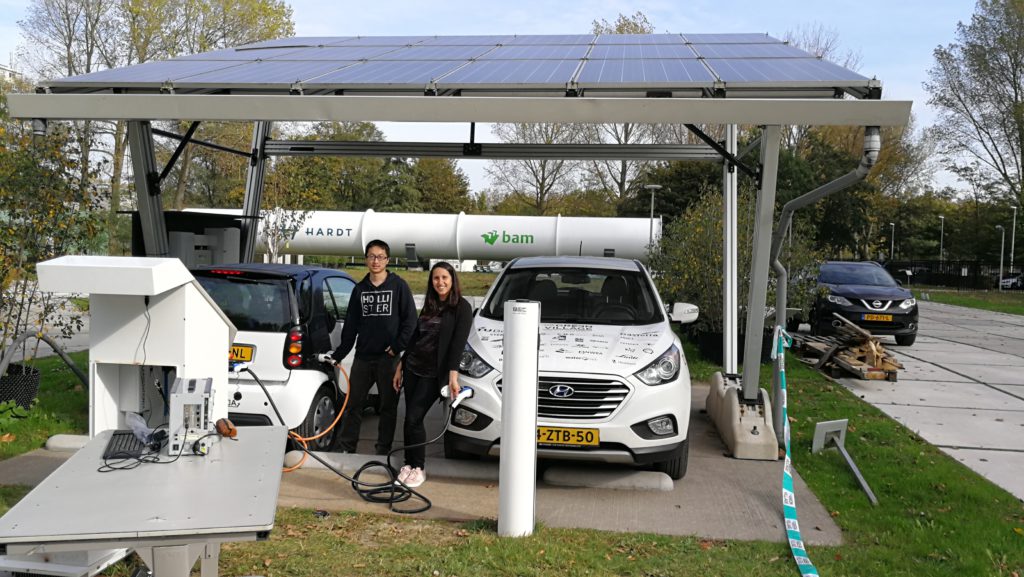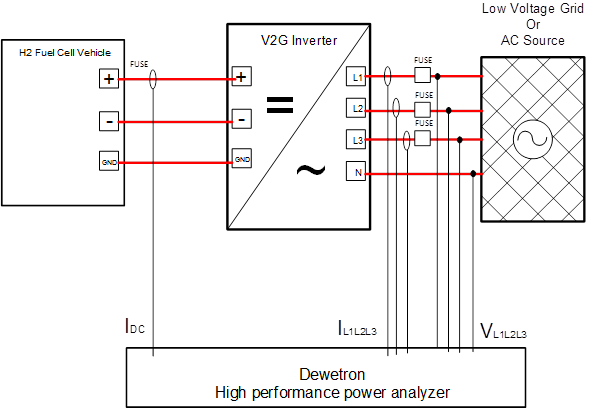While the Hyundai ix35 can deliver power to the grid thanks to a parallel connection with the integrated fuel cell and battery, the hydroelectric model uses a fuel cell to extend the available range of the battery in a connection in series. Preliminary results on the potential use of this new technology are promising as they show how FCEVs can fully meet the electricity supply of ordinary residential buildings in terms of output power gradient, maximum output power, and storage capacity. Furthermore, the combined use of fuel cell and battery can provide fast power ramps. Therefore, when parked the two cars could provide energy services to grid operators, such as balancing power, frequency control, and voltage control, but also to houses. The fast ramp up/ ramp down rates generated by the constant switching on/off of house appliances could be met by the car thanks to vehicle-to-home connection (V2H). The experiments Carla Robledo, TU Delft, and Ziqian Zhang, TU Graz, performed fall within the projects tasks of grid stability and flexibility, demand side management and forecasting, E-Vehicles Integration, data management and storage as well as Small Pilots on Campus.
In the coming months, further tests will be conducted with the Hyundai ix35 FCEV to measure the dynamic response of the car. The data collected will be analysed to improve the performance of the V2G mode and create tailored smart energy products and services.

Researchers Ziqian Zhang, TU Graz, and Carla Robledo, TU Delft, operating the two hybrid cars.

Circuit tested by TU Delft and TU Graz researchers, including the main devices (fuel cell, battery, measurement tools) and indicating where AC and DC voltage apply.


